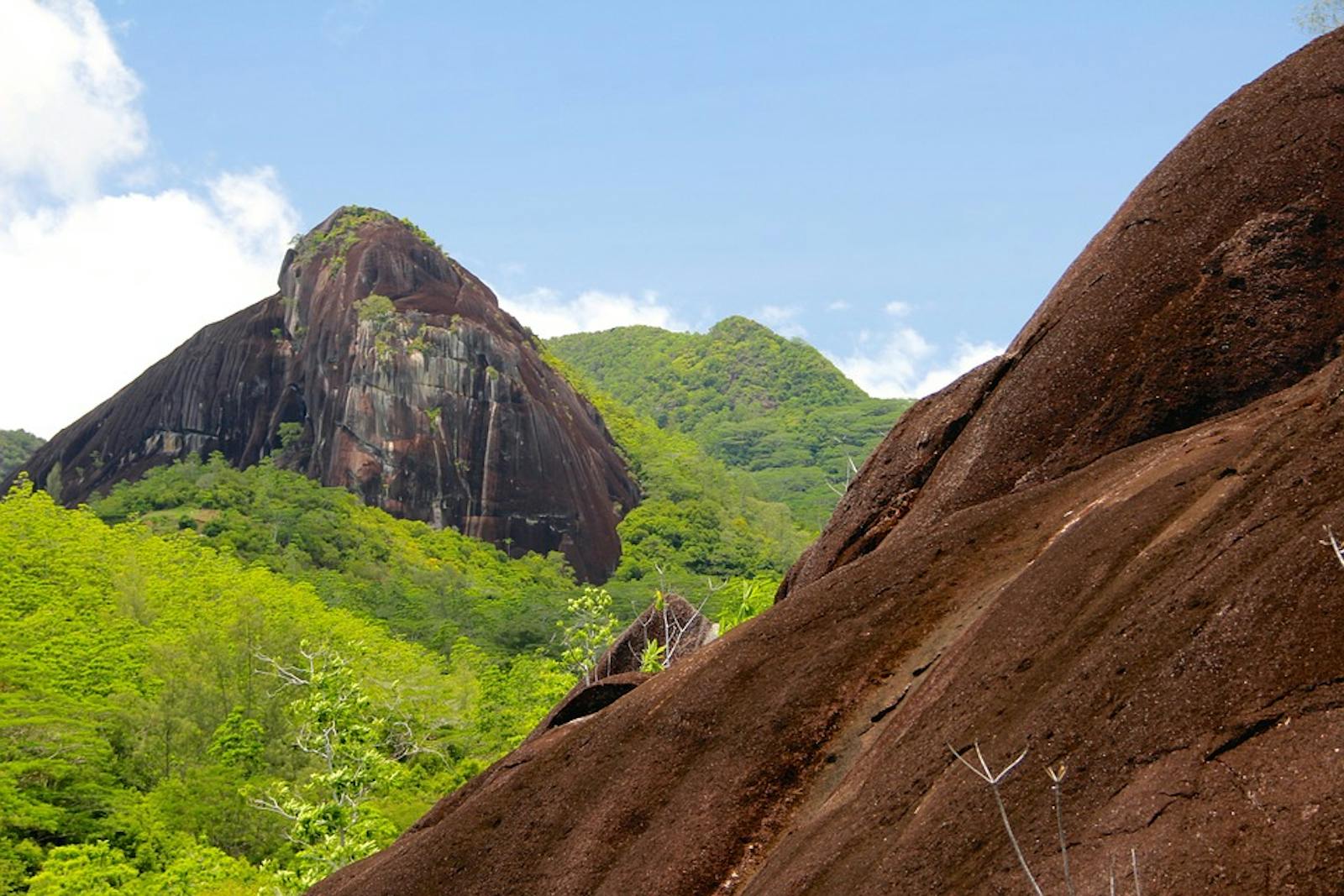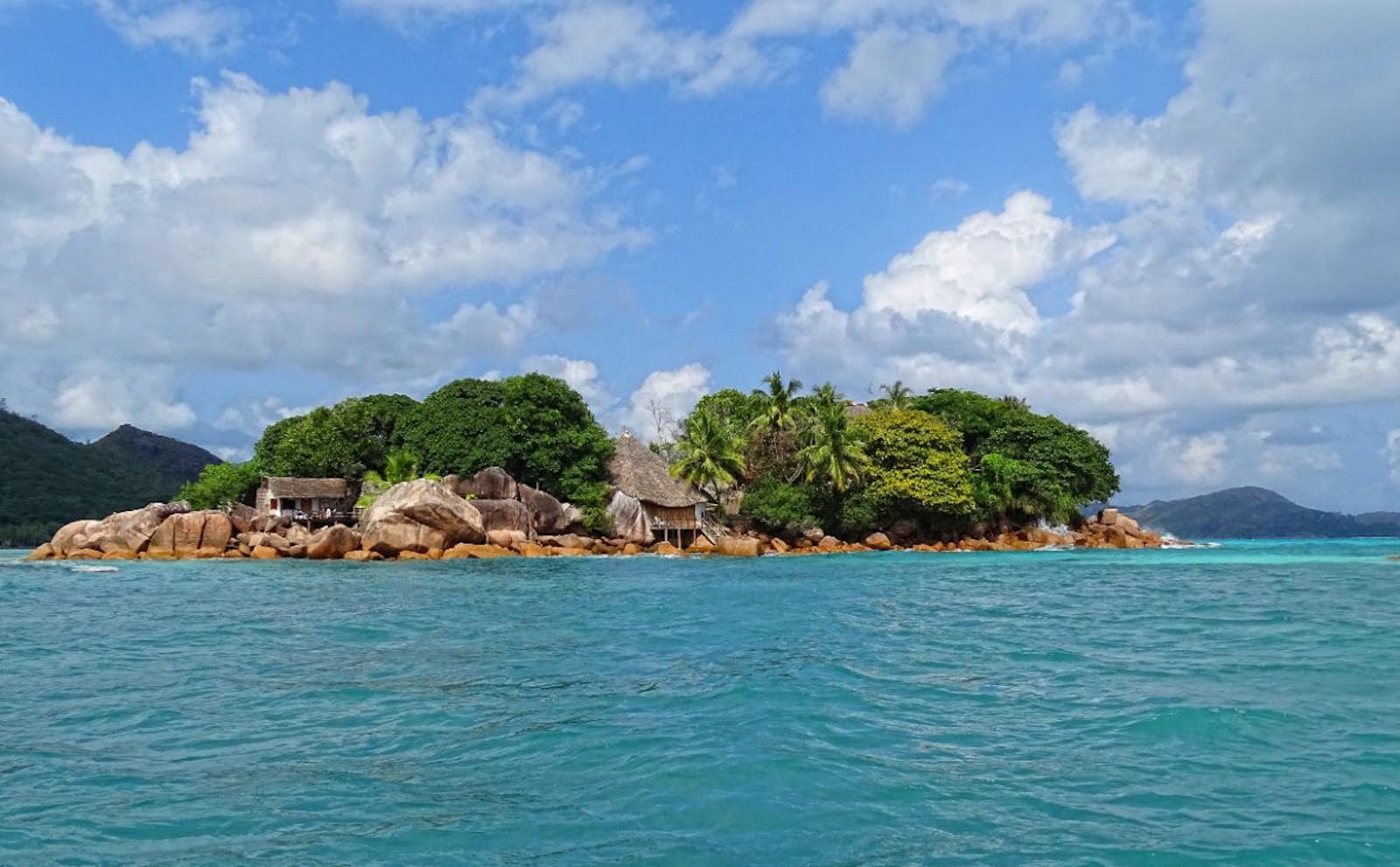Granitic Seychelles Forests
The ecoregion’s land area is provided in units of 1,000 hectares. The protection goal is the Global Safety Net (GSN1) area for the given ecoregion. The protection level indicates the percentage of the GSN goal that is currently protected on a scale of 0-10.
Bioregion: Seychelles & Comoros Tropical Islands (AT5)
Realm: Afrotropics
Ecoregion Size (1000 ha):
31
Ecoregion ID:
13
Protection Goal:
57%
Protection Level:
2
States: Republic of Seychelles
The Seychelles Islands are the only mid-oceanic granitic islands in the world. The millions of years of isolation and varied habitats of the islands has led to exceptionally high levels of endemism and species richness in both flora and fauna. One such example is the jellyfish tree (Medusagyne oppositifolia), which is currently one of the rarest plant species in the world and has a restricted population distribution of fewer than 30 plants scattered over three hilltops on Mahé.
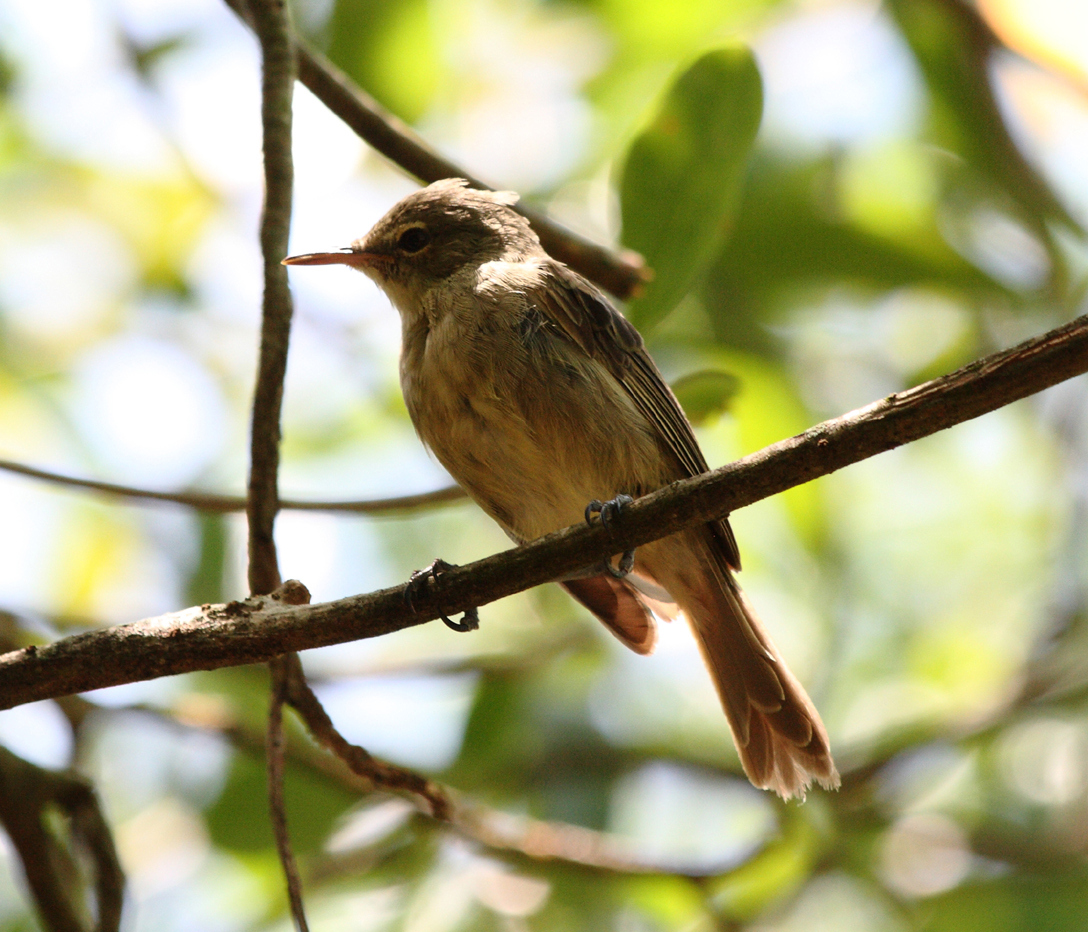
The flagship species of the Granitic Seychelles Forests ecoregion is the Seychelles warbler. Image credit: Creative Commons
The 115 islands making up the Seychelles are located in the Indian Ocean, about 930 km northeast of Madagascar. The 40 ancient granitic islands (made of c.750 million year old rocks) comprise the core of this ecoregion and generally have steep sides and impressive peaks, shaped by weathering and erosion. Mahé, the largest and tallest island in the Seychelles (145 km2, 914 m elevation), is typical of the granitic islands. In addition, other islands are comprised of old (65 million years) volcanic rocks and young raised coral reefs.
The islands experience a humid tropical climate with little seasonal variation in temperature. Heavy monsoon rains occur from November to February, and in the cooler and somewhat drier months (March to January) the trade winds blow from the southeast. Mean annual rainfall varies with elevation, and on the granitic islands ranges from 2,300 to 5,000 mm. The abundant rainfall and warm temperatures, along with soil enriched by guano, allowed lush palm forests to develop on portions of the islands. At elevations below 610 m, palms, pandans, and hardwoods characterize the forests, including common tree species such as Phoenicophorium borsigianum, Paraserianthes falcataria, Adenanthera pavonina, and Morinda citrifolia. In river valleys and marshes, various species of palms and screwpine were formerly abundant. Above 600 m are remnants of cloud forests, where plants closely related to southeast Asian species can be found.
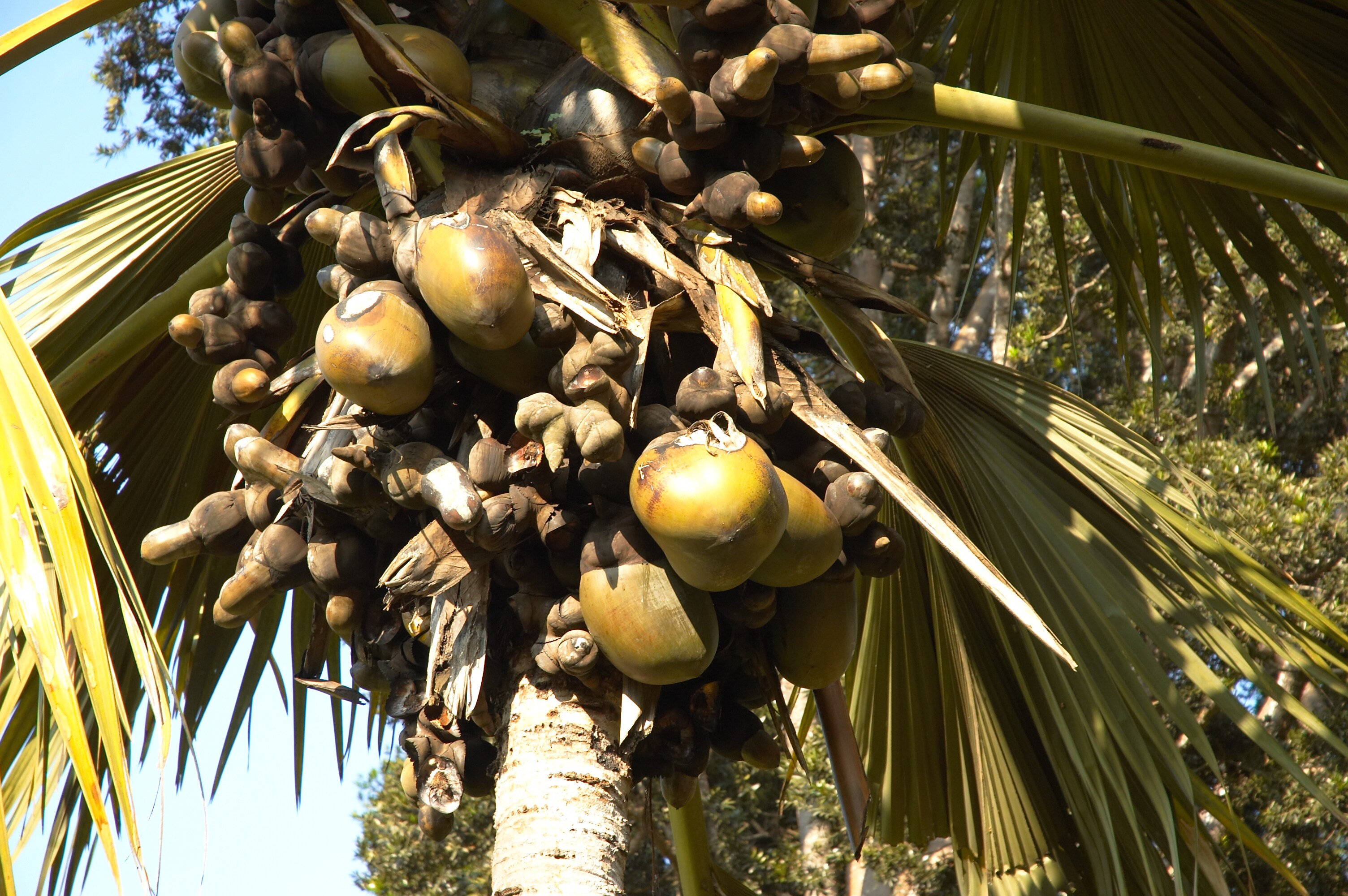
Coco de mer. Image credit: Wouter Hagens, Creative Commons
The Seychelles support many endemic species in a variety of taxa. There are many endemic species from a diverse range of native plants. The palms are a particularly unique group, with 6 endemics including the imperiled, monotypic palm coco-de-mer which is restricted to the islands of Praslin and Curieuse (and a small introduced population on Silhouette). The flora shows affinities with that of nearby islands, Madagascar and the Mascarenes, as well as with mainland Africa and Asia.
The most famous native herpetofauna species were the giant land tortoises, and although both original species are now extinct (Arnold’s giant tortoise and Seychelles girant tortoise) following human occupation and settlement, tortoises from Aldabra atoll have been brought to the granitic Seychelles and are commonly kept as pets. Two species of birds, the Seychelles scops-owl and the Seychelles paradise-flycatcher are confined to single islands. Other endemics found on more than one island include the Seychelles kestrel, Seychelles swiftlet, Seychelles bulbul and the Seychelles warbler.
Only tiny remnants of the natural vegetation now remain on the Seychelles. The Vallée de Mai on Praslin Island provides the best example of intact native palm forest and has been declared a World Heritage Site. The Morne Seychellois National Park is the largest terrestrial park and contains important cloud forest. Other important reserves are Aride Island Special Reserve, Cousin Island Special Reserve, La Digue Veuve Special Reserve, and Curieuse Marine National Park. Although extremely small, the reserves protect critically endangered species and their habitats.
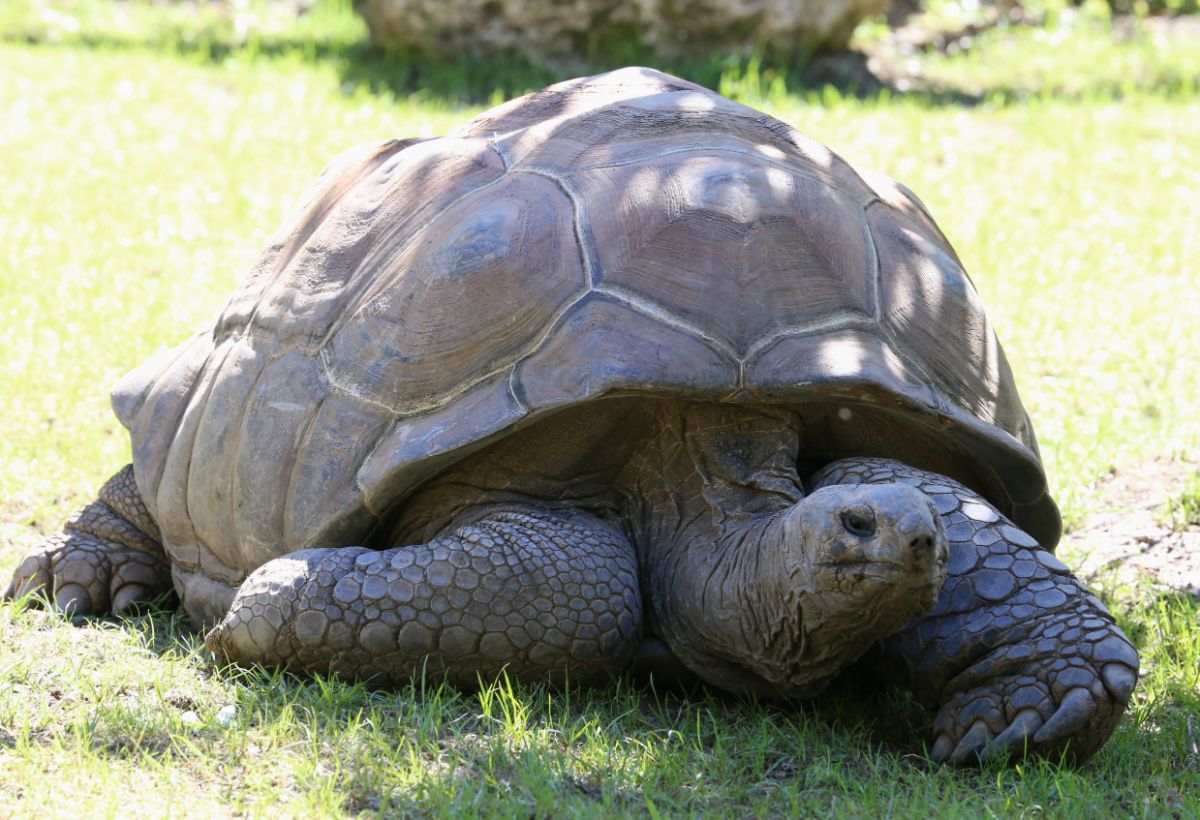
Aldabra giant tortoise. Image credit: Creative Commons
Two centuries of human presence on the islands has led to widespread habitat loss, the introduction of exotic species, and habitat fragmentation, especially in the lowlands. As forests were cut for plantations in the 1800s and early 1900s at middle elevations, erosion became a problem. Coconut, vanilla, and cinnamon plantations now occupy most of the coastal plateaus. Introduced goats, pigs and cattle inhibit regeneration of native forest; and introduced cats, dogs, common mynah, and tenrecs prey upon native species, particularly birds, lizards, caecilians, and invertebrates. Introduced plants also out-compete the native vegetation and provide unsuitable habitat for the endemic animals.
The endemic land birds all occupy a mere fraction of their historic range, although reintroductions have helped improve the conservation status of several restricted populations. For example, the Seychelles magpie-robin, once one of the most threatened birds in the world, increased from 23 individuals on Frégate Island in 1990 to over 100 individuals on three islands in 2002. As of 2012, the total population was 244–248 birds and its status was down listed from Critically Endangered to Endangered.
The priority conservation actions for the next decade will be to: 1) continue eradicating introduced mammals with prioritization of isolated uninhabited islands; 2) increase marine protected areas to 400,000 km2 by 2021; and 3) implement Ecosystem Based Adaptations to mitigate and adapt to climate change impacts.
Citations
1. Burgess, N., Hales, J.A., Underwood, E., Dinerstein, E., Olson, D., Itoua, I., Schipper, J., Ricketts, T. and Newman, K. 2004. Terrestrial ecoregions of Africa and Madagascar: a conservation assessment. Island Press.
2.Gane, J. and Burt, A. 2016. Longevity and survival of the Endangered Seychelles Magpie Robin Copsychus sechellarum. Ostrich. 87(1), pp.81-83.
3. Russell, J.C., Cole, N.C., Zuël, N. and Rocamora, G. 2016. Introduced mammals on western Indian Ocean islands. Global ecology and conservation. 6, pp.132-144.
4. The Nature Conservancy. 2018. Seychelles: Converting debt to save oceans. [Online]. [Accessed 29 January 2018]. Available from: https://www.nature.org/ourinitiatives/regions/africa/wherewework/seychelles.xml
